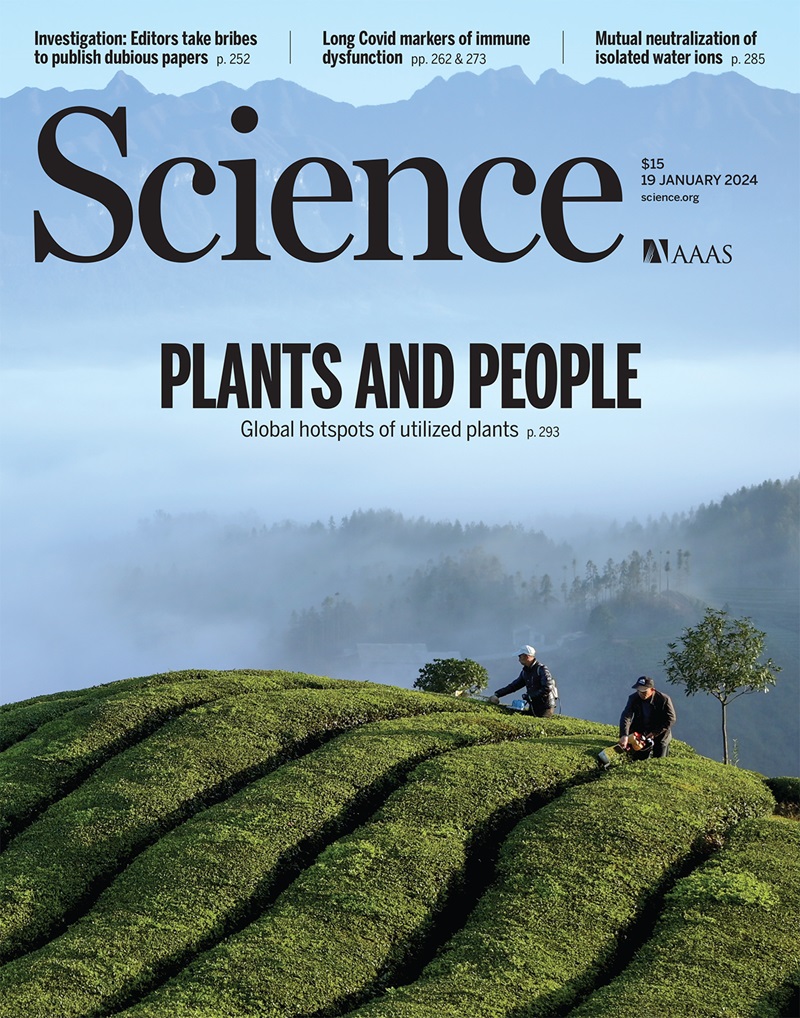Unsupervised evolution of protein and antibody complexes with a structure-informed language model
IF 44.7
1区 综合性期刊
Q1 MULTIDISCIPLINARY SCIENCES
引用次数: 0
Abstract
Large language models trained on sequence information alone can learn high-level principles of protein design. However, beyond sequence, the three-dimensional structures of proteins determine their specific function, activity, and evolvability. Here, we show that a general protein language model augmented with protein structure backbone coordinates can guide evolution for diverse proteins without the need to model individual functional tasks. We also demonstrate that ESM-IF1, which was only trained on single-chain structures, can be extended to engineer protein complexes. Using this approach, we screened about 30 variants of two therapeutic clinical antibodies used to treat severe acute respiratory syndrome coronavirus 2 (SARS-CoV-2) infection. We achieved up to 25-fold improvement in neutralization and 37-fold improvement in affinity against antibody-escaped viral variants of concern BQ.1.1 and XBB.1.5, respectively. These findings highlight the advantage of integrating structural information to identify efficient protein evolution trajectories without requiring any task-specific training data.
利用结构语言模型对蛋白质和抗体复合物进行无监督进化。
仅根据序列信息训练的大型语言模型就能学习蛋白质设计的高级原理。然而,除了序列之外,蛋白质的三维结构决定了它们的特定功能、活性和可进化性。在这里,我们展示了一个使用蛋白质结构骨干坐标增强的通用蛋白质语言模型,它可以指导不同蛋白质的进化,而无需对单个功能任务进行建模。我们还证明,只在单链结构上训练过的 ESM-IF1 可以扩展到蛋白质复合物的工程设计。利用这种方法,我们筛选了用于治疗严重急性呼吸系统综合症冠状病毒 2(SARS-CoV-2)感染的两种治疗性临床抗体的约 30 个变体。我们对抗体逸出的病毒变体 BQ.1.1 和 XBB.1.5 的中和能力和亲和力分别提高了 25 倍和 37 倍。这些发现凸显了整合结构信息来识别高效蛋白质进化轨迹的优势,而不需要任何特定任务的训练数据。
本文章由计算机程序翻译,如有差异,请以英文原文为准。
求助全文
约1分钟内获得全文
求助全文
来源期刊

Science
综合性期刊-综合性期刊
CiteScore
61.10
自引率
0.90%
发文量
0
审稿时长
2.1 months
期刊介绍:
Science is a leading outlet for scientific news, commentary, and cutting-edge research. Through its print and online incarnations, Science reaches an estimated worldwide readership of more than one million. Science’s authorship is global too, and its articles consistently rank among the world's most cited research.
Science serves as a forum for discussion of important issues related to the advancement of science by publishing material on which a consensus has been reached as well as including the presentation of minority or conflicting points of view. Accordingly, all articles published in Science—including editorials, news and comment, and book reviews—are signed and reflect the individual views of the authors and not official points of view adopted by AAAS or the institutions with which the authors are affiliated.
Science seeks to publish those papers that are most influential in their fields or across fields and that will significantly advance scientific understanding. Selected papers should present novel and broadly important data, syntheses, or concepts. They should merit recognition by the wider scientific community and general public provided by publication in Science, beyond that provided by specialty journals. Science welcomes submissions from all fields of science and from any source. The editors are committed to the prompt evaluation and publication of submitted papers while upholding high standards that support reproducibility of published research. Science is published weekly; selected papers are published online ahead of print.
 求助内容:
求助内容: 应助结果提醒方式:
应助结果提醒方式:


